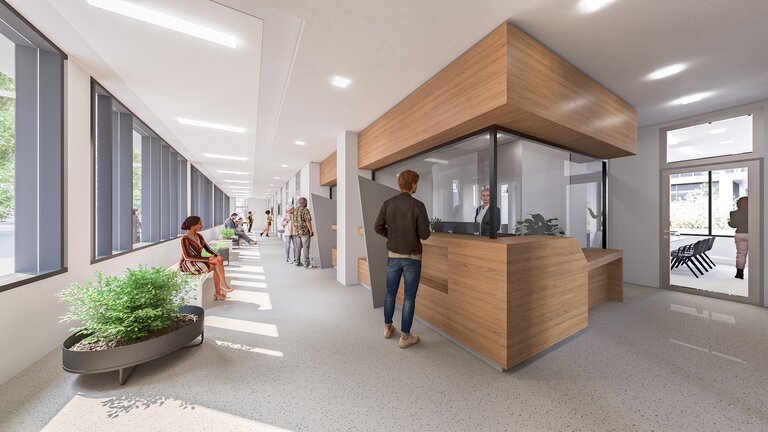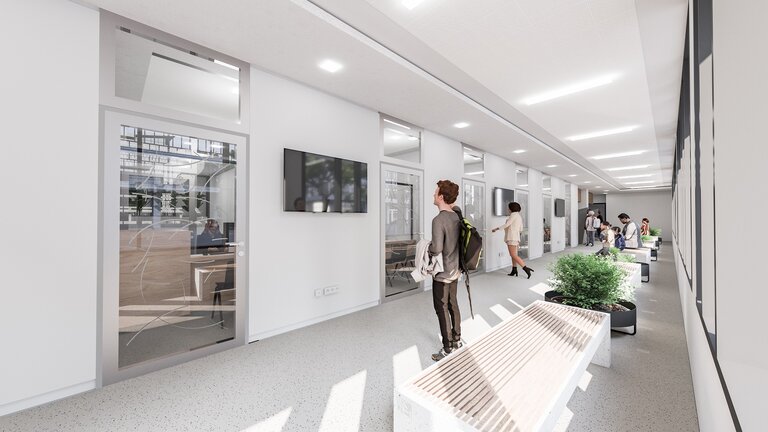Central service points, space for consultation and meetings, and a working area not accessible to visitors: the new administration building of the Rems-Murr rural district in the German city of Waiblingen will consist of a public zone, a semi-public zone and an internal zone. With this special usage concept, the rural district treads new ground and creates a model for modern public administration offices in Germany. Drees & Sommer SE participated in the development of the spatial and usage concept for the administration complex. The Stuttgart-based consulting company has provided the rural district with advice on their overall real estate strategy since 2017. The new building was officially opened on May 17.
The new administration building in Rötestrasse is a first module in the overall real estate concept of the Rems-Murr rural district in the city of Waiblingen. In future, it is planned that there will be only two large administration buildings in Waiblingen instead of the ten small sites which have existed up to now. After two and a half years of building work, the new building on the former site of the Ludwig Schlaich Academy was officially opened by the district commissioner, Dr. Richard Sigel, on May 17.
The new building was designed and planned by BK2H Architekten, has an underground car park and comprises a net internal area of about 3600 square meters. In future it will accommodate the foreign persons registration office, the public order office and the public health department. The approximately 170 employees of these three departments deal with matters which are especially confidential, emotional and sometimes involve sensitive security issues. The new spatial concept takes this into account and sub-divides the space on a three-zone principle, creating a public zone, a semi-public zone and an internal zone.
‘Even before the Covid-19 pandemic we knew how difficult it can be to organize the movement of visitors in administrative offices in difficult circumstances. The events surrounding the refugee crisis in 2015/16 already showed me that the procedures in an administrative building need to be thoroughly redesigned. Together with Drees & Sommer, we therefore ensured that the goal of becoming more modern, more digital and smarter as an administration was firmly integrated into the planning process for our new administration building from the very first day. With the three-zone principle we offer citizens a professional consulting environment and provide our employees with a safe and efficient place to work which is equipped for the requirements of the future. The new spatial concept also creates flexibility and embodies a fresh design for working procedures, even catering for the mobility of employees who come to work by bike. New working models, including working from home and a high proportion of part-time jobs, can also be taken into account in the best possible way,’ explained district commissioner Dr. Richard Sigel.
Find more information in our press release.


